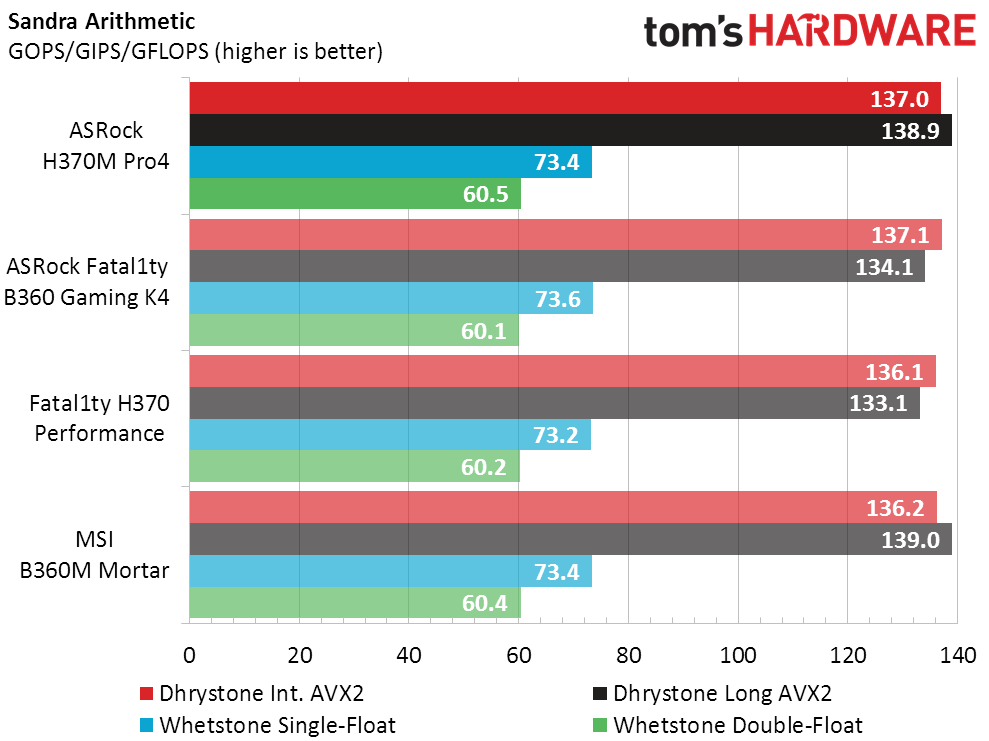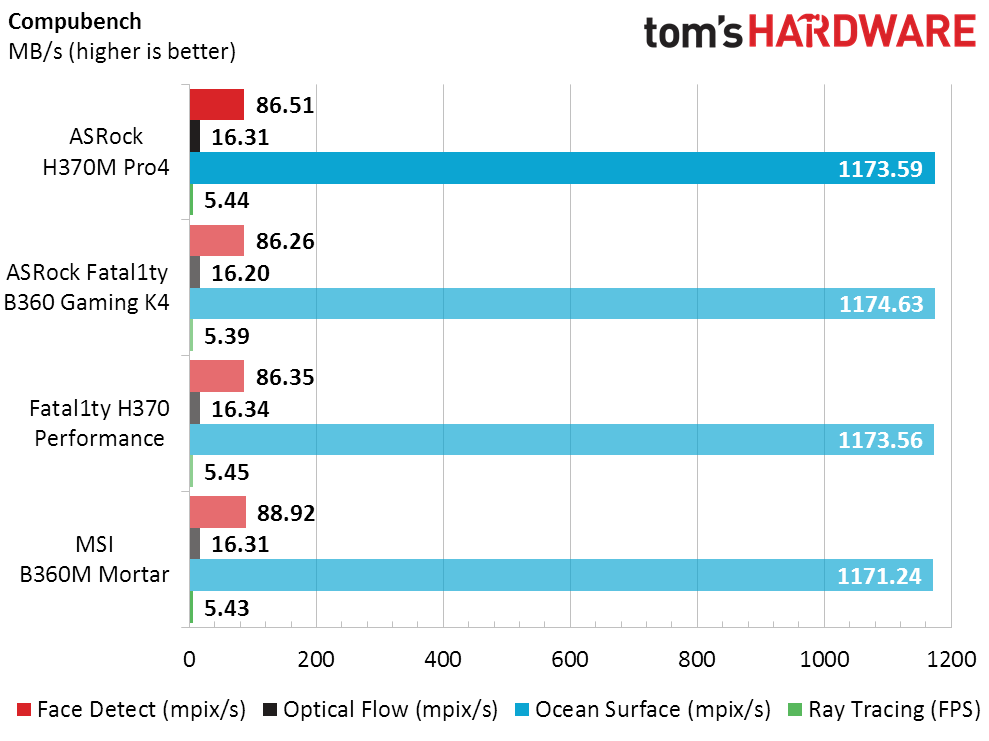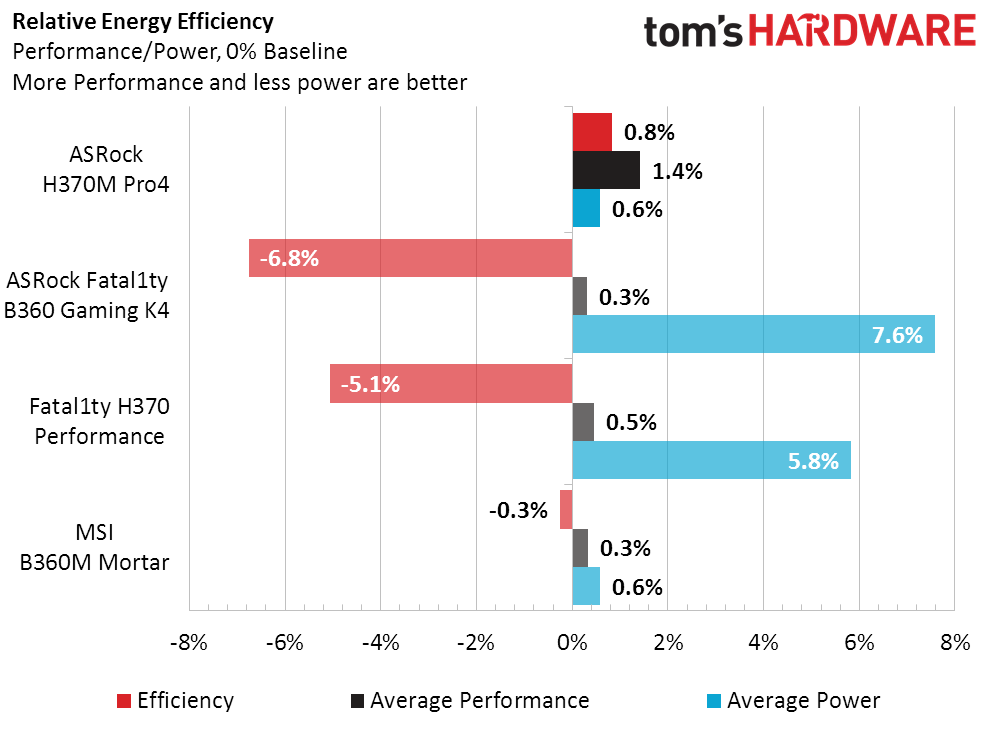ASRock H370M Pro4 Micro ATX Motherboard: Best Cheap 1151?
Why you can trust Tom's Hardware
Benchmark Results and Final Analysis
H370 and B360 boards lack overclocking, which makes it far more difficult for motherboard and firmware designers to cheat to secure a fraudulent performance win. There are still things manufacturers can do to keep a processor from throttling back to save energy however, and that’s why we enable all Intel energy-saving settings prior to benchmarks. The technological ideal would be for all boards to perform equally, but then we’d have nothing to discuss.
Synthetic Benchmarks
Synthetic benchmarks are best used as a validation tool, exposing performance abnormalities caused by configuration errors or cheating. The H370M Pro4 leads slightly in a few 3DMark tests where nobody should, but it also sees enough losses that this might be happenstance.










Miniscule leads continue through three of PCMark8’s tests, but the gain over other ASRock boards that also shows up in Sandra Dhrystone merely puts it on par with the B360M Mortar…a board that landed last in PCMark’s Creative test.
3D Games




We’re happy to see that there’s little difference in gaming performance between the two Micro ATX samples, ASRock’s H370M Pro4 and MSI’s B360M Mortar, because any noticeable differences would be exceedingly difficult to explain on a “locked” platform.
Timed Applications



Less is better regarding completion times here. Similar completion times in our mixed workloads gave us hope for the simplest possible analysis, but then the H370M Pro4 pulled ahead in both our Adobe Creative Cloud and MS Office tests. Perhaps the power measurements will enlighten us as to a reason.
Power, Heat, & Efficiency
The H370M Pro4 consumes slightly less power at full load compared to our other three samples, leaving us at a loss to explain its 1.4% above-average benchmark results.



Percent averages shown above include the results of all boards we've previously tested in this hardware configuration. Some of the not-shown boards dragged down our performance averages slightly, so that the four boards shown appear to be “above average” performers.
Get Tom's Hardware's best news and in-depth reviews, straight to your inbox.
Final Analysis
A performance-to-price chart is handy for things that serve only a single function, but motherboards are packed with features that require further analysis. Oh, and there’s the problem that big performance gains require cheating (via overclocking methods). Fortunately, the later isn’t a significant issue in today’s test.
We’re instead in looking primarily at an incredibly-high value score due to an extremely low price. The H370 chipset stands above the B360 for its additional HSIO (Intel’s flexible high-speed pathways) resources and the extra PCIe/USB3/SATA that goes with them, along with SATA RAID that’s not available to B360 buyers. Yet the H370M Pro4 costs less than the competing B360M Mortar.
So what did the H370’s extra chipset pathways get us? Two SATA ports and two I/O-panel USB 3.0 (aka USB 3.1 Gen1) ports, when compared to the B360 model from MSI. That doesn’t sound like much, but the B360M Mortar’s I/O panel lacked 5Gb/s ports completely. The two 10Gb/s ports are 5Gb/s compatible, but that’s still only two ports. The MSI model does upgrade the front-panel headers to include one 10Gb/s USB 3.1 Gen2, but that single port comes at the expense of two USB 3.0 ports, because it uses the same resources . If you’re stuck wonderign which is better, consider first the type of front-panel cables your case uses.
The competing B360M Mortar also includes an RGB controller and corresponding header for RGB cables, so it might be better for show-system builders or those who just like their PC's innards basked in a rainbow-like glow. But then again, the MSI board costs more and has fewer USB 3.x and SATA ports. Builders who value those ports more highly than RGB get a double shot of value in the H370M Pro4’s lower price.
MORE: Best Motherboards
MORE: How To Choose A Motherboard
MORE: All Motherboard Content
-
hrafn42 I recently built a system around this MB. The only flaw I found in it was a lack of a front panel 'aggregator clip' (or whatever you want to call it), meaning that I had to plug each of the finicky headers into the MB directly. Otherwise it was a very good (and very good value) MB.Reply
Likewise to TOMASF, lack of light-pollution is a plus to me.

